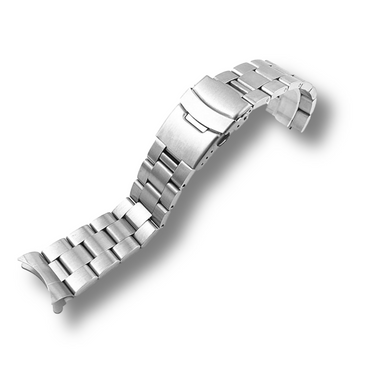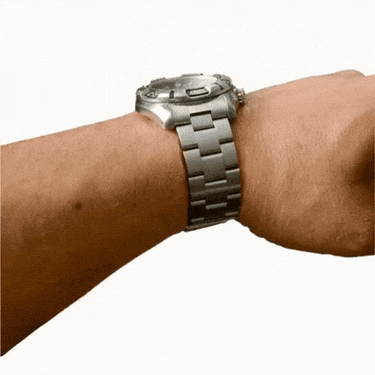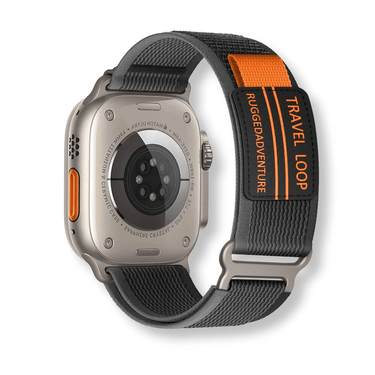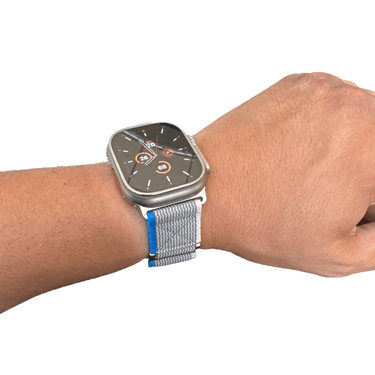Welcome, watch lovers, to the world of watch winders! For those who are unfamiliar with this term, a watch winder is a mechanical device that keeps automatic watches wound and functioning correctly when they're not being worn. It's an essential tool for any serious watch collector who values the accuracy and longevity of their timepieces.
But why is it so important for collectors to invest in a high-quality watch winder? Well, let me tell you: the lifespan of your automatic watches can be dramatically reduced when they're not kept wound properly.
The lubrication in the movement dries out, and parts can become damaged or worn down over time. All it takes is a few days of neglecting your automatic watches for them to start losing accuracy and eventually stop altogether.
This is where a good watch winder comes into play. By keeping your watches wound at all times, you'll ensure that they're always running smoothly and accurately.
But here's the thing: not all watch winders are created equal. You need to choose one that aligns with your specific collection's needs if you want to get the most out of your investment.
Understanding Your Watch Collection
As a watch collector, it is critical to know the winding requirements of each watch in your collection. Every automatic watch has unique winding needs, and failing to meet those needs can result in damage and shorten the lifespan of your timepiece. Before investing in a watch winder, take the time to understand the winding requirements of each watch.
Some watches require clockwise rotation while others require counter-clockwise rotation. Some require both directions or intermittent rotations to prevent overwinding.
Importance of knowing your watches' winding requirements
Without understanding your watches' winding requirements, you risk damaging your timepieces and ultimately losing money on expensive repairs or replacements. Investing in a high-quality watch winder is pointless if it doesn't meet the specific needs of your collection.
Knowing your watches' winding needs also allows you to tailor their care according to their personalities. Just like people, each watch has its own quirks and preferences that must be taken into account for proper maintenance.
Explanation of different types of automatic watches and their winding needs
There are three main types of automatic watches: bi-directional, uni-directional, and rotor-wound. Bi-directional watches wind equally well in both directions while uni-directional watches only wind fully in one direction. Rotor-wound watches use an oscillating weight that rotates as you move around throughout the day.
Different types of automatic movements have different ideal rotation speeds as well as directional preferences--some even have unique characteristics depending on which side they are resting on overnight! It's important to consider these details when looking for a new winder so that you can provide optimal care for each individual piece.
Creative section: "Know Thy Watches: Understanding the Personalities in Your Collection"
Your collection is more than just an assortment of mechanical pieces--each member has its own unique quirks and personality. Some are endlessly reliable and keep perfect time, while others can be finicky and require extra attention.
By taking the time to understand your collection's individuals, you can provide them with the care that they truly deserve. A watch winder is more than just a device--it's a tool for nurturing your investment over time.
Knowing each watch allows you to anticipate problems or needs as they arise, such as when a particular watch requires cleaning or maintenance beyond what the winder provides. It also allows you to tailor their care according to their personalities.
Some watches may thrive with very little winding, while others may need more frequent rotations in order to stay accurate. Taking the time to learn about your collection is part of being an excellent caretaker and responsible collector--by doing so, you ensure that each piece will continue ticking for generations to come!
Types of Watch Winders
When it comes to choosing the right watch winder for your collection, there are several types available in the market. The most popular ones include single, double, quad and multiple-watch winders. Each type has its own advantages and disadvantages depending on your specific requirements.
Single Watch Winders
These winders are designed to accommodate only one watch at a time. They are perfect for collectors who have a small collection of automatic watches or do not want to spend too much money on a winder. Single watch winders are also great if you have a special watch that requires specific winding needs.
Pros: - Affordable
- Perfect for collectors with small collections or single watches with unique winding needs Cons:
- Can only accommodate one watch at a time - Not suitable for larger collections
Double Watch Winders
If you have two automatic watches that require winding, then a double winder is the way to go. It can be more cost-effective than buying two single winders and is perfect for couples who share an interest in luxury watches.
Pros: - Affordable alternative to buying two separate single winders
- Perfect for couples who share an interest in luxury watches Cons:
- Cannot accommodate more than two watches - May take up more space than a single winder
Quad and Multiple-Watch Winders
For serious collectors with larger collections of automatic watches, quad or multiple-watch winders are the best option. These types of winders can accommodate multiple watches at once and come in various sizes depending on your needs.
Pros: - Accommodates multiple watches simultaneously
- Perfect for serious collectors with large collections Cons:
- Expensive compared to other types of winders - May require more space and maintenance
Matchmaker, Matchmaker: Finding the Perfect Fit for Your Watches
When it comes to choosing the right watch winder, it's essential to find one that matches your specific watch collection needs. The size, shape, and weight of your watches are important factors to consider when selecting a winder.
Finding the Right Fit
A good rule of thumb is to choose a winder that fits your watches snugly and securely. If a winder is too small or too large, it may not be able to hold your watches properly, which can cause unnecessary wear and tear. Additionally, if you have watches with different sizes or shapes, ensure that you select a winder with adaptable cushions or adjustable winding modules.
The Importance of Winding Direction
Different automatic watches require different winding directions (clockwise, counterclockwise or both). It's important to ensure that your chosen winder has customizable directional settings suitable for all of the automatic watches in your collection.
Consider Your Collection's Power Needs
Watch winders require electricity to function correctly. It's important to ensure that the watch winder you choose is compatible with the voltage requirements in your country.
If you plan on using your watch winder while traveling overseas, make sure it can work on both 110v and 220v power outlets. Choosing the right watch winder for your collection may seem like a daunting task at first glance but by considering these factors; type of winders available in the market such as single, double or quad winders along with finding the perfect fit for each one of them as well as taking care of their individual winding direction requirements will help you make an informed decision.
Features to Consider
When it comes to choosing the right watch winder for your collection, there are a number of features you should consider. While some may seem less important than others, it's always best to do your research and invest in a high-quality watch winder that meets all of your needs. In this section, we'll explore three features you should keep in mind: noise level, directional settings, and timer options.
Noise Level: Silent But Deadly
The noise level of your watch winder may not seem like a big deal at first, but it can actually be quite important. Think about it: if you're keeping your watch winder on your nightstand or dresser, the last thing you want is for it to be so loud that it keeps you up at night. Plus, constant noise can be irritating over time and could even lead to headaches or other health issues.
So when shopping for a watch winder, pay attention to the decibel level. Look for one that operates quietly and won't disturb your peace.
To take things to the next level, consider investing in a watch winder with soundproofing technology built-in. These tend to be more expensive but can make a huge difference if you're someone who is sensitive to sound.
Directional Settings: Keep Your Watches Wound Correctly
Different watches require different levels of winding depending on their specific calibers and complications. That's why directional settings are so important when selecting a watch winder: they allow you to customize how your watches are wound so they work correctly.
Some winders offer clockwise-only or counterclockwise-only rotations, while others can alternate between directions depending on what's needed for each specific watch in the collection. Be sure to pay attention to these settings when making your choice – having the right direction can make all the difference in keeping your watches running smoothly.
Timer Options: Customize Your Winding Schedule
Timer options are another important feature to keep in mind. While some watch winders may simply keep your watches wound continuously, others offer customizable winding schedules that you can set yourself.
This is particularly useful if you have a variety of watches in your collection with different winding needs. For example, some watch winders allow you to set the number of rotations per day or even the specific times when your watches should be wound.
This level of customization allows you to ensure that each watch is getting the correct amount of winding without any risk of over-winding or under-winding. So if you're serious about keeping your collection in top shape, look for a watch winder with customizable timer options.
Budget Considerations
Price doesn't always equal quality
It's time to debunk the myth that a high price tag always equates to quality. Just because a watch winder costs an arm and a leg doesn't mean it's automatically the best option for you or your watches. In fact, many expensive watch winders are often overpriced due to their fancy branding or luxurious appearance.
Don't fall for this trap! Instead, focus on the functionality of the watch winder and make sure it meets the specific needs of your collection.
When shopping for a watch winder, compare prices across different brands and models. Don't assume that the most expensive one is automatically the best choice.
Look for user reviews and do your research on each option before making a decision. You may be surprised to find that some budget-friendly options actually offer better value than their pricey counterparts.
Tips on finding a good value for your money
Finding a good value in a watch winder requires some patience and research. First, set your budget and stick to it. This will help you narrow down your options and avoid overspending on unnecessary features.
Next, look for sales or discounts from reputable retailers. You can also consider buying pre-owned or refurbished watch winders from trustworthy sellers who guarantee their products' quality.
Another tip is to prioritize functionality over aesthetics when choosing a watch winder. While it may be tempting to splurge on an ornate or decorative piece, remember that what matters most is how well it keeps your watches wound.
Don't be afraid to ask other collectors for recommendations or advice on finding good value in a watch winder. Sometimes word-of-mouth referrals can lead you to hidden gems that you wouldn't have found otherwise.
Finding a good value in a watch winder requires being an informed shopper who prioritizes functionality over brand name or appearance. By doing your research, setting a budget, and being open to different options, you can find a watch winder that meets your collection's needs without breaking the bank.
Maintenance and Care
Importance of Regular Maintenance and Cleaning
Let's be honest, nobody wants to deal with a broken watch winder. Not only can it be frustrating to have to stop your routine and try to diagnose the problem, but repairing or replacing a watch winder can also be costly.
That's why it's essential to take care of your watch winder with regular maintenance and cleaning. One of the most critical aspects of maintaining a watch winder is keeping it clean.
Dust, dirt, and other debris can accumulate inside the mechanism over time, causing it to malfunction. To avoid this issue, wipe down your watch winder at least once a month with a soft cloth.
Also, make sure you're using an appropriate cleaner for the material of your watch winder. Another critical maintenance step is lubrication.
Over time, the internal mechanisms in your watch winder will begin to wear down and need lubrication to keep them functioning correctly. However, be careful not to over-lubricate as this can cause more harm than good.
Tips on How to Care for Your Watch Winder
Now that you understand the importance of regular maintenance let's dive into some tips on how best to care for your watch winder. Firstly, always refer back to the manufacturer's guidelines when performing any maintenance or cleaning techniques.
Some materials may require special care or equipment that you don't have readily available. Secondly, avoid exposing your watch winder to extreme temperatures or moisture.
These elements can cause damage such as rusting or warping in materials like wood. If you're storing your watches in their winders for extended periods without use, consider removing them periodically for manual winding before returning them back into their winders.
This will help prevent any build-up from lack of use inside both the watches themselves as well as the watch winder mechanism. Regular maintenance and cleaning are essential for the longevity of your watch winder.
It may seem like a tedious task, but taking care of your watch winder can save you from costly repairs in the long run. Remember to refer back to the manufacturer's guidelines, avoid extreme temperatures and moisture, and remove watches periodically for manual winding if not using them for extended periods.
Conclusion
Choosing the right watch winder for your collection is an important task that should not be taken lightly. It is crucial to understand the winding requirements of your watches and the features of different types of winders before making a purchase. By taking the time to do your research, you can ensure that your watches are properly cared for and maintained for years to come.
Investing in a high-quality watch winder may seem like a luxury, but it can actually save you money in the long run. Properly wound and maintained watches are less likely to require costly repairs or replacements down the line.
Plus, there's nothing like knowing that your prized possessions are always ready to wear at a moment's notice. In today's fast-paced world, it can be easy to overlook the simple pleasures in life.
A well-crafted timepiece is one such pleasure – a testament to precision engineering, design excellence, and meticulous craftsmanship. By investing in a watch winder that matches the caliber of your collection, you can ensure that these creations are kept ticking for generations to come.

























